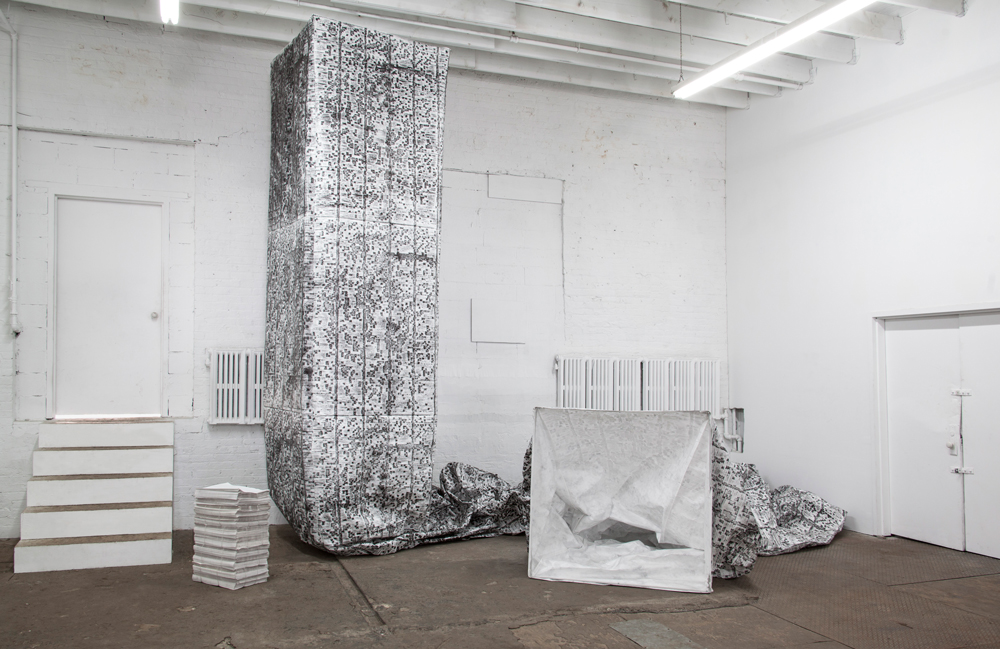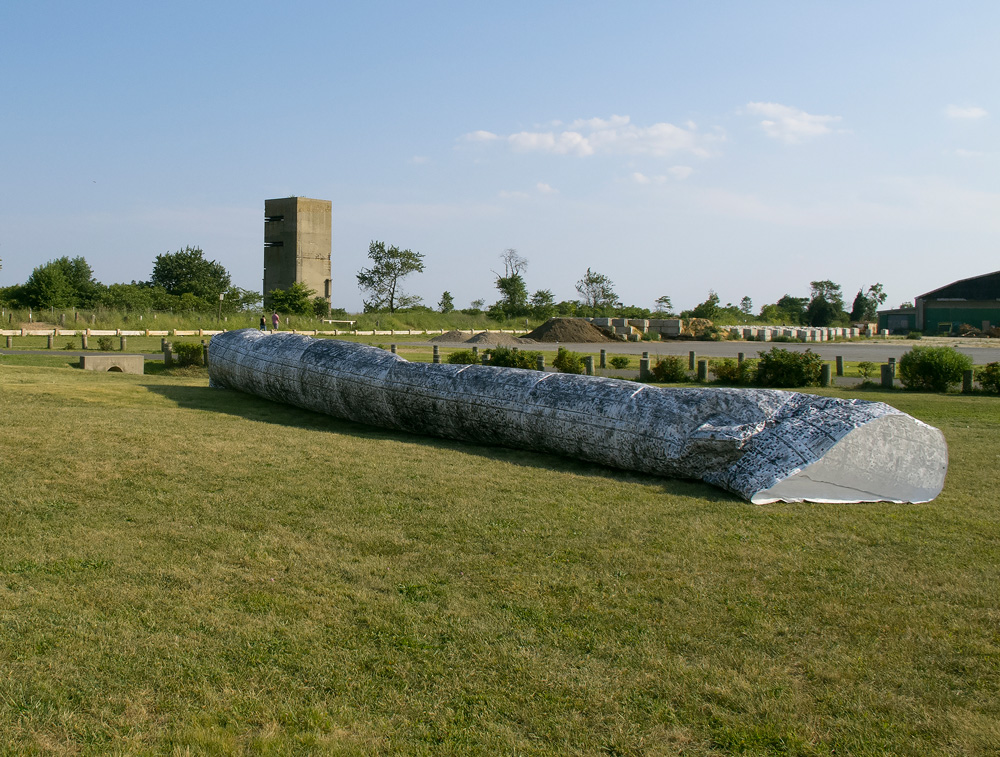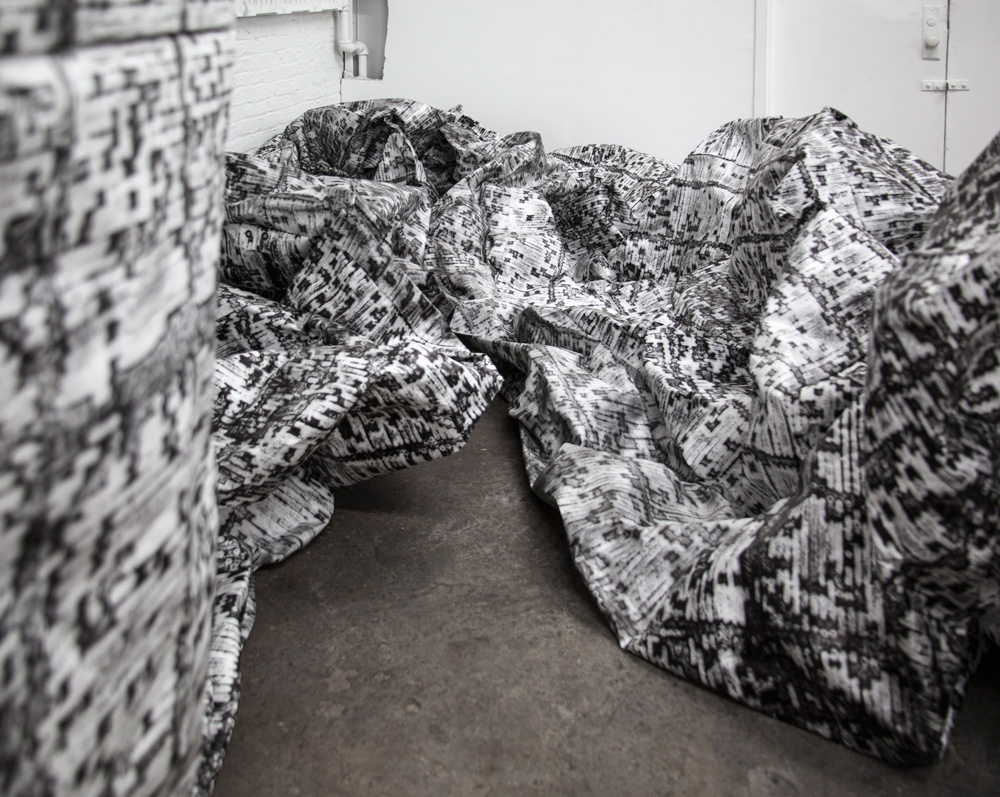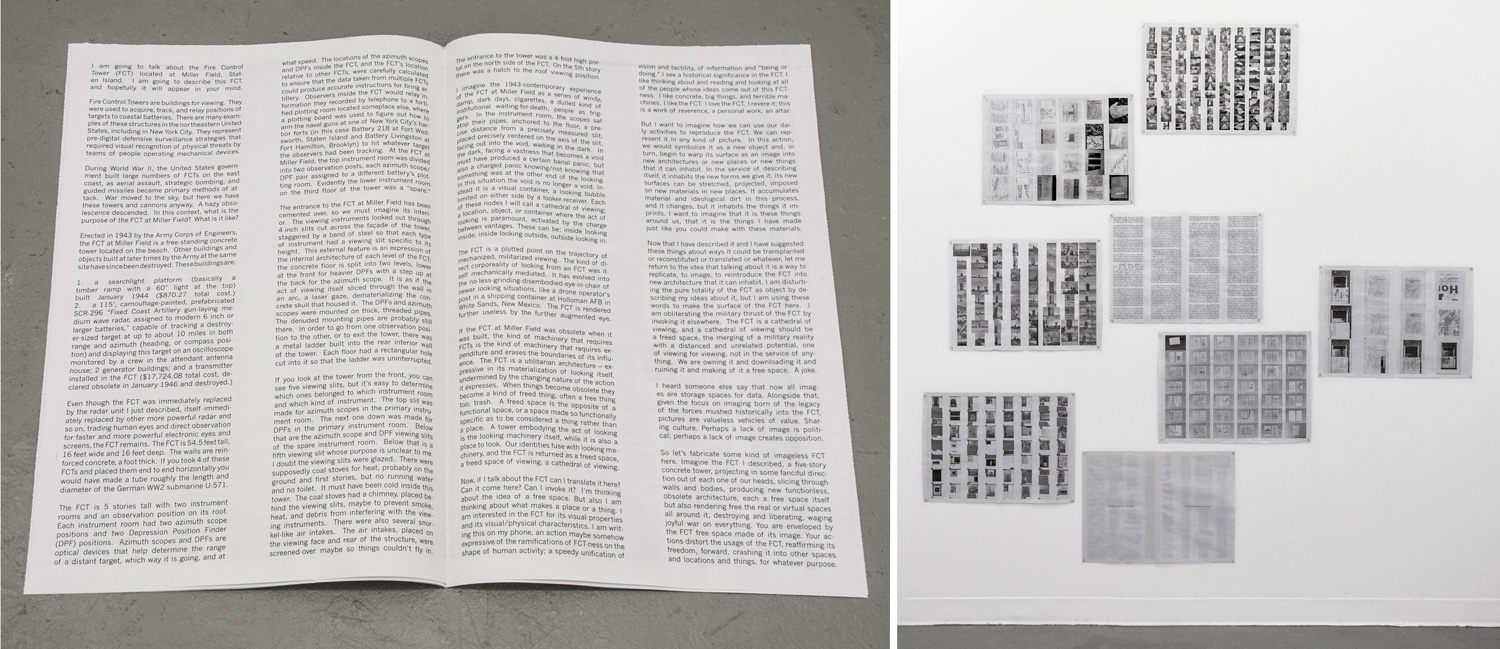-
I am going to talk about the Fire Control Tower (FCT) located at Miller Field, Staten Island. I am going to describe this FCT, and hopefully it will appear in your mind.

Fire Control Towers are buildings for viewing. They were used to acquire, track, and relay positions of targets to coastal batteries. There are many examples of these structures in the northeastern United States, including in New York City. They represent pre-digital defensive surveillance strategies that required visual recognition of physical threats by teams of people operating mechanical devices.
During World War II, the United States government built large numbers of FCTs on the east coast, as aerial assault, strategic bombing, and guided missiles became primary methods of attack. War moved to the sky, but here we have these towers and cannons anyway. A hazy obsolescence descended. In this context, what is the purpose of the FCT at Miller Field? What is it like?
Erected in 1943 by the Army Corps of Engineers, the FCT at Miller Field is a free-standing concrete tower located on the beach. Other buildings and objects built at later times by the Army at the same site have since been destroyed. These buildings are:
1. a searchlight platform (basically a timber ramp with a 60” light at the top) built January 1944 ($870.27 total cost.)
2. a 115’, camouflage-painted, prefabricated SCR-296 “Fixed Coast Artillery gun-laying medium wave radar, assigned to modern 6 inch or larger batteries,” capable of tracking a destroyer-sized target at up to about 10 miles in both range and azimuth (heading, or compass position) and displaying this target on an oscilloscope monitored by a crew in the attendant antenna house; 2 generator buildings; and a transmitter installed in the FCT ($17,724.08 total cost, declared obsolete in January 1946 and destroyed.)
Even though the FCT was immediately replaced by the radar unit I just described, itself immediately replaced by other more powerful radar and so on, trading human eyes and direct observation for faster and more powerful electronic eyes and screens, the FCT remains. The FCT is 54.5 feet tall, 16 feet wide and 16 feet deep. The walls are reinforced concrete, a foot thick. If you took 4 of these FCTs and placed them end to end horizontally you would have made a tube roughly the length and diameter of the German WW2 submarine U-571.

The FCT is 5 stories tall with two instrument rooms and an observation position on its roof. Each instrument room had two azimuth scope positions and two Depression Position Finder (DPF) positions. Azimuth scopes and DPFs are optical devices that help determine the range of a distant target, which way it is going, and at what speed. The locations of the azimuth scopes and DPFs inside the FCT, and the FCT’s location relative to other FCTs, were carefully calculated to ensure that the data taken from multiple FCTs could produce accurate instructions for firing artillery. Observers inside the FCT would relay information they recorded by telephone to a fortified plotting room located someplace else, where a plotting board was used to figure out how to aim the naval guns at one of New York City’s harbor forts (in this case Battery 218 at Fort Wadsworth, Staten Island and Battery Livingston at Fort Hamilton, Brooklyn) to hit whatever target the observers had been tracking. At the FCT at Miller Field, the top instrument room was divided into two observation posts, each azimuth scope/DPF pair assigned to a different battery’s plotting room. Evidently the lower instrument room on the third floor of the tower was a “spare.”
The entrance to the FCT at Miller Field has been cemented over, so we must imagine its interior. The viewing instruments looked out through 4-inch slits cut across the façade of the tower, staggered by a band of steel so that each type of instrument had a viewing slit specific to its height. This external feature is an expression of the internal architecture of each level of the FCT; the concrete floor is split into two levels, lower at the front for heavier DPFs with a step up at the back for the azimuth scope. It is as if the act of viewing itself sliced through the wall in an arc, a laser gaze, dematerializing the concrete skull that housed it. The DPFs and azimuth scopes were mounted on thick, threaded pipes. The denuded mounting pipes are probably still there. In order to go from one observation position to the other, or to exit the tower, there was a metal ladder built into the rear interior wall of the tower. Each floor had a rectangular hole cut into it so that the ladder was uninterrupted.
If you look at the tower from the front, you can see five viewing slits, but it’s easy to determine which ones belonged to which instrument room and which kind of instrument. The top slit was made for azimuth scopes in the primary instrument room. The next one down was made for DPFs in the primary instrument room. Below that are the azimuth scope and DPF viewing slits of the spare instrument room. Below that is a fifth viewing slit whose purpose is unclear to me. I doubt the viewing slits were glazed. There were supposedly coal stoves for heat, probably on the ground and first stories, but no running water and no toilet. It must have been cold inside this tower. The coal stoves each had a chimney, placed behind the viewing slits, maybe to prevent smoke, heat, and debris from interfering with the viewing instruments. There were also several snorkel-like air intakes. The air intakes, placed on the viewing face and rear of the structure, were screened-over maybe so things couldn't fly in. The entrance to the tower was a 4 foot high portal on the north side of the FCT. On the 5th story there was a hatch to the roof. The roof has a parapet.
I imagine the 1943-contemporary experience of the FCT at Miller Field as a series of windy, damp, dark days, cigarettes, a dulled kind of institutional waiting-for-death, people as triggers. In the instrument room, the scopes sat atop their pipes, anchored to the floor, a precise distance from a precisely measured slit, placed precisely centered on the axis of the slit, facing out into the void, waiting in the dark. In the dark, facing a vastness that becomes a void must have produced a certain banal panic, but also a charged panic knowing/not knowing that something was at the other end of the looking. In this situation the void is no longer a void. Instead it is a visual container, a looking bubble limited on either side by a looker-receiver. Each of these nodes I will call a cathedral of viewing; a location, object, or container where the act of looking is paramount, activated by the charge between vantages. These can be: inside looking inside, inside looking outside, outside looking in.
The FCT is a plotted point on the trajectory of mechanized, militarized viewing. The kind of direct corporeality of looking from an FCT was itself mechanically mediated. It has evolved into the no-less-grinding-disembodied-eye-in-chair of newer looking situations, like a drone operator’s post in a shipping container at Holloman AFB in White Sands, New Mexico. The FCT is rendered further useless by the further augmented eye.

If the FCT at Miller Field was obsolete when it was built, the kind of machinery that requires FCTs is the kind of machinery that requires expenditure and erases the boundaries of its influence. The FCT is a utilitarian architecture – expressive in its materialization of looking itself, undermined by the changing nature of the action it expresses. When things become obsolete they become a kind of freed thing, often a free thing too, trash. A freed space is the opposite of a functional space, or a space made so functionally specific as to be considered a thing rather than a place. A tower embodying the act of looking is the looking machinery itself, while it is also a place to look. Our identities fuse with looking machinery, and the FCT is returned as a freed space, a freed space of viewing, a cathedral of viewing.
Now, if I talk about the FCT can I translate it here? Can it come here? Can I invoke it? I'm thinking about the idea of a free space. But also I am thinking about what makes a place or a thing. I am interested in the FCT for its visual properties and its visual/physical characteristics. I am writing this on my phone, an action maybe somehow expressive of the ramifications of FCT-ness on the shape of human activity; a speedy unification of vision and tactility, of information and "being or doing." I see a historical significance in the FCT. I like thinking about and reading and looking at all of the people whose ideas come out of this FCTness. I like concrete, big things, and terrible machines. I like the FCT. I love the FCT. I revere it; this is a work of reverence, a personal work, an altar.
But I want to imagine how we can use our daily activities to reproduce the FCT. We can represent it in any kind of picture. In this action, we would symbolize it as a new object and, in turn, begin to warp its surface as an image into new architectures or new places or new things that it can inhabit. In the service of describing itself, it inhabits the new forms we give it. Its new surfaces can be stretched, projected, imposed on new materials in new places. It accumulates material and ideological dirt in this process, and it changes, but it inhabits the things it imprints. I want to imagine that it is these things around us, that it is the things I have made just like you could make with these materials.
Now that I have described it and I have suggested these things about ways it could be transplanted or reconstituted or translated or whatever, let me return to the idea that talking about it is a way to replicate, to image, to reintroduce the FCT into new architecture that it can inhabit. I am disturbing the pure totality of the FCT as object by describing my ideas about it, but I am using these words to make the surface of the FCT here. I am obliterating the military thrust of the FCT by invoking it elsewhere. The FCT is a cathedral of viewing, and a cathedral of viewing should be a freed space, the merging of a military reality with a distanced and unrelated potential, one of viewing for viewing, not in the service of anything. We are owning it and downloading it and ruining it and making of it a free space. A joke.
I heard someone else say that now all images are storage spaces for data. Alongside that, given the focus on imaging born of the legacy of the forces mushed historically into the FCT, pictures are valueless vehicles of value. Sharing culture. Perhaps a lack of image is political; perhaps a lack of image creates opposition.
So let’s fabricate some kind of imageless FCT here. Imagine the FCT I described, a five-story concrete tower, projecting in some fanciful direction out of each one of our heads, slicing through walls and bodies, producing new functionless, obsolete architecture, each a free space itself but also rendering free the real or virtual spaces all around it, destroying and liberating, waging joyful war on everything. You are enveloped by the FCT free space made of its image. Your actions distort the usage of the FCT, reaffirming its freedom, forward, crashing it into other spaces and locations and things, for whatever purpose.
-
FCT Publication PDF (downloadable as a PDF)

-
Deployment FCT Jewel Broadcast 70

-
